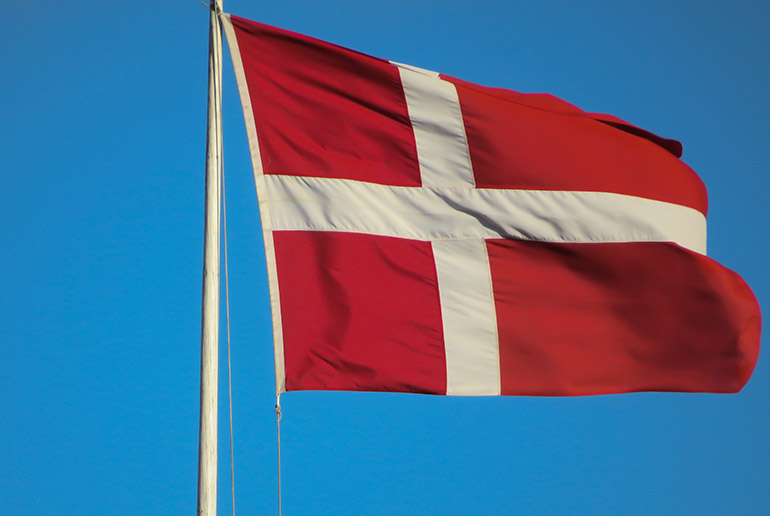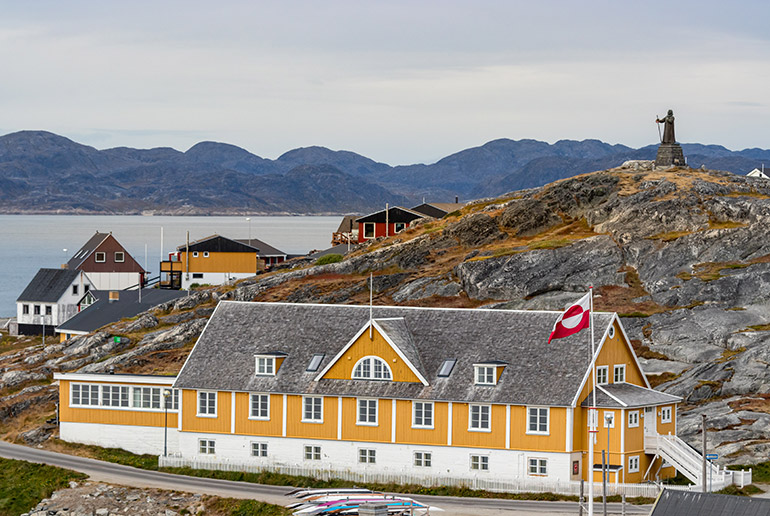You probably know that Danish is the national language of Denmark.
But the Danish language is also spoken in other places too – including some surprising locations that might not spring to mind right away.
Let’s look at where Danish is spoken and see how many people use the language around the world!

How many people speak Danish?
It’s impossible to know the exact number of Danish speakers, but most estimates say that some 6 million people worldwide use the Danish language.
As you might expect, the vast majority of Danish speakers live in Denmark.
More than 95% of the population has Danish as its mother tongue, and those that don’t speak Danish are usually first-generation migrants that have not yet learned the language.
Danish is the language that Danes speak at work, at home, and at school – though, just like in many northern European countries, universities tend to teach masters courses in English, rather than Danish.
Danish is also one of the EU’s ‘official’ languages, but in reality it’s rarely used for any kind of international diplomacy, except when discussing issues which affect Denmark and other Danish territories directly.
English is widely spoken by Danes (and very well, too!), so it remains the go-to language for business and politics.
Where else is Danish spoken?
Most notably, Danish is spoken by a significant number of people in the south of Sweden, where the easy transport link between Copenhagen and Malmö encourages lots of Danish people to live in Sweden (and lots of Swedes to live in Denmark).
Similarly, there are a significant number of people in Northern Germany, close to the border with Denmark, who learn and speak Danish.
Danish is also spoken in Greenland and the Faroe Islands, each of which are ‘autonomous territories’ within the Kingdom of Denmark.

Both Greenland and the Faroe Islands use their own languages as the ‘official’ languages (Greenlandic and Faroese, respectively), but Danish can still be seen and heard – something that remains a source of irritation for those who’d prefer to embrace a post-colonial future.
Danish is still taught in Greenland’s schools, and students in the Faroe Islands learn it as a second language too.
Further afield, you might hear people using Danish as well – particularly in the United States, Canada, and Australia.
All of these countries have received significant numbers of Danish migrants throughout the years, and it’s not uncommon to see towns (or even celebrities) with Danish-sounding names.
It’s estimated that there are more than 1.1 million people of Danish descent living in the United States alone, and many have family ties that help keep the Danish language and traditions alive.
Can people in other countries understand Danish?
Danish is a North Germanic language, and it’s most closely related to Swedish and Norwegian.
If you’re able to speak either of those languages, you can almost certainly ‘get by’ and understand Danish, especially if you’re able to read the words, many of which look very similar when written down.
German has many similarities too, but being able to speak German doesn’t mean you’ll necessarily be able to understand what a Dane is saying.
Is Danish spoken in Iceland?
Danish is also similar to Icelandic, and there are some cultural similarities due to the fact that Iceland was a part of Denmark for more than a century, but the two languages are not mutually intelligible and they sound very different.
Mostly, Icelanders do not speak Danish – but there are enough (estimates say around 1000 people) that Danish is considered one of the country’s minority languages.
Is Danish growing or dying?
Denmark’s population is growing slightly, so that may lead to an increase in the total number of Danish speakers over time.
But official estimates show that the population of Denmark will still be less than 7 million by 2060 – so it’s unlikely that Danish will be taking over as the world’s largest language any time soon!
See also:
Danish last names: how do they work?
Danish vs Dutch: what is the difference?
Denmark vs Finland: which one should I visit?









